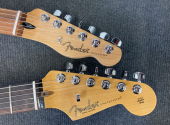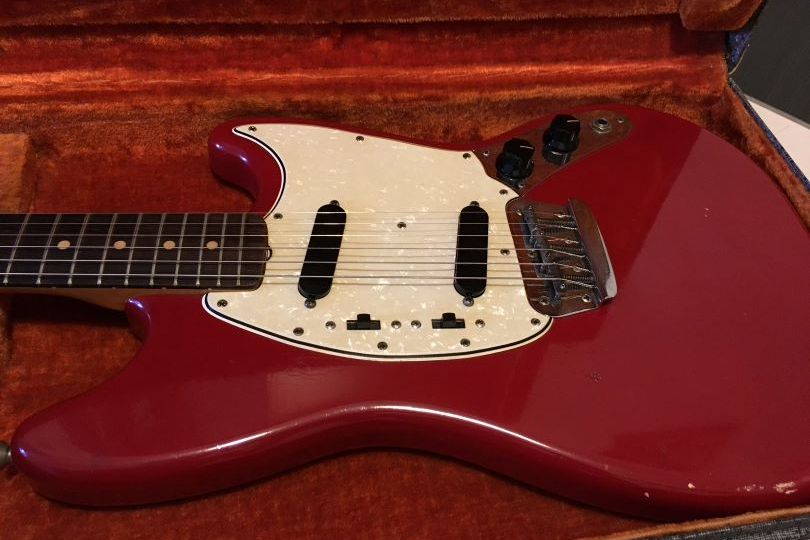
Under the Hood #15: Different Scale Lengths of Fender Guitars
Fender guitars were mainly made in three scale lengths, and each of them found its use. The most popular and used one is, of course, the standard one, as it is ideal for most guitarists. However, many players also favour shorter scales, and they are used on some guitar models. What are the specifics of various scale lengths, and how do the Fender guitar models differ? We'll take a look at that in this article of our series.
The scale length is a pretty important thing in a guitar. It affects the sound, the feeling of playing the instrument, and, most importantly, the comfort of playing. We all have different sized hands and differently long or strong fingers. This is important to keep in mind when choosing a new guitar, for example. How you play or how you feel about a guitar is primarily a subjective feeling. When you play a particular guitar, and you find it poor, it may not be necessarily so. I often find that it's not the quality of the guitar that's to blame, but a poor choice of guitar for a particular player. And I mean that in technical terms—for example, the choice of the scale length.
A player with long fingers and large hands will probably be happy when playing on a standard scale. Someone with smaller hands and shorter fingers, though, such as a child or someone of smaller stature, is more likely to appreciate a guitar with a shorter scale. Sometimes I assist in choosing the first guitar and I always try to point out that choosing the right guitar can affect a guitarist's future. By playing comfortably, we can practice longer without our tendons and fingers hurting. And another aspect is perhaps even more important. It makes progress in playing much more noticeable and faster.
In short: the right choice of guitar influences whether the guitarist will enjoy playing and will actually improve, or whether they will give up soon, thinking that the guitar is not for them. I'm going to repeat myself, but it's important to remember this: failure, unfortunately, is usually caused by the wrong choice of guitar.
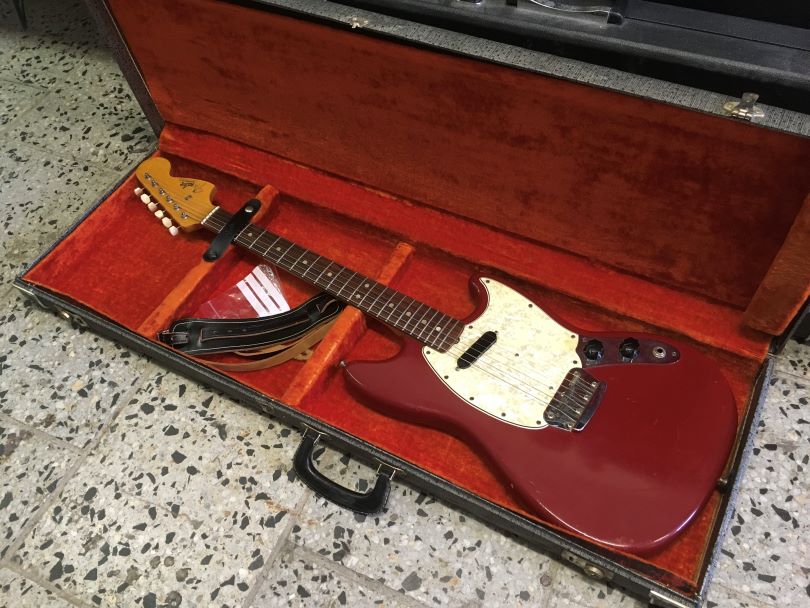
The difference between short and standard scale length
Why is the choice of a scale length so important? The scale length is the distance between the zero fret and the bridge, i.e. between the string contact points. The longer the distance, the more spacing between the frets on the fretboard, which means more room for your fingers. The shorter the scale, the less spacing there is between the frets. This is ideal for smaller hands, as the fingers don't have to stretch as much between the frets.
If a child with a smaller hand span plays the guitar, it is easier for them to reach the zero fret on a shorter scale, playing is more comfortable, and their hand and body movements are more natural. On the other hand, a player with large hands and long fingers would not appreciate a short scale because their fingers would not fit comfortably between the frets.
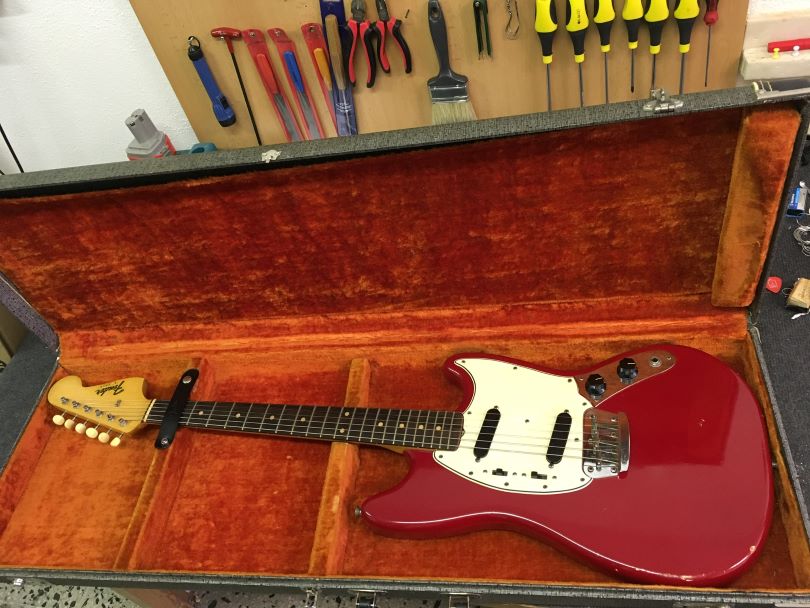
Fender guitars with a 22.5-inch scale length
In the 1950s, Fender was making the most famous and highest quality guitars. However, not everyone could afford to buy a Telecaster or Stratocaster. Fender responded to this by releasing a cheaper guitar accessible to a broader range of people. So from the middle of this decade onwards, they began to produce so-called student models of the Musicmaster series.
What's interesting about the Musicmaster is its simplicity and, most importantly, its scale length. The standard scale size of Fender guitars is 25.5 inches. The first Musicmaster models, however, had a 22.5-inch long scale. The difference is 7.5 centimetres, which is a lot for a guitar. Nowadays, this is a standard scale length for children's guitars.
The Musicmaster was affordable because it was smaller and more straightforward. It had only one pickup at the neck and two potentiometers, an easily removable pickguard and a modern shape. There was no risk of a significant warping with the shorter neck, which is why guitars of the time are still popular with players today.
At the same time, a more popular variant of the Musicmaster called the Duo Sonic came out in the mid-1950s. It was basically a Musicmaster with a second pickup, and a pickup switch added. Both models had the same bodies and necks, only the electronics differed. The Musicmaster had only one pickup, but there was a shaft milled for a second pickup under the pickguard on the guitar body. Also, the Duo Sonic model had the shortest scale length Fender ever made – 2.5 inches.
Both models were suitable for children, students or people of smaller stature. They represented a launching pad for entering the guitar world, with the vision that one day there might be an adult Stratocaster or Telecaster.

Fender guitars with a 24-inch scale length
In the 1960s, Fender extended the scale length to 24 inches on student models, making them more accessible to more people. The 22.5-inch scale proved too short and impractical and did not provide as much playing comfort.
The 24-inch scale length is almost 4 centimetres longer than the previous one. It's still a bit short of the standard scale, but most guitarists can already play it without significant difficulties.
Another guitar with a 24-inch scale length was the Fender Jaguar in the 1960s. It offered a lot of sonic possibilities with more switches between pickups. This model was produced with the vision that it would be more successful than the Stratocaster, but it didn't happen. Its popularity didn't come about until mostly in the 1990s.
In 1964, Fender came to market with the Mustang model. This originally had a 22.5-inch scale length, but the vast majority were then made in 24-inch scale length. The Mustang was intended as a model between the Duo Sonic and the Telecaster. It is a model similar to the Duo Sonic, but enhanced with a tremolo.
All of these models are referred to as offset guitars. This term refers to guitars with an asymmetrical shape with typical accentuated curves on one side. Offset guitars also include the Fender Jazzmaster, which, from the beginning, was made with the standard 25.5-inch scale.
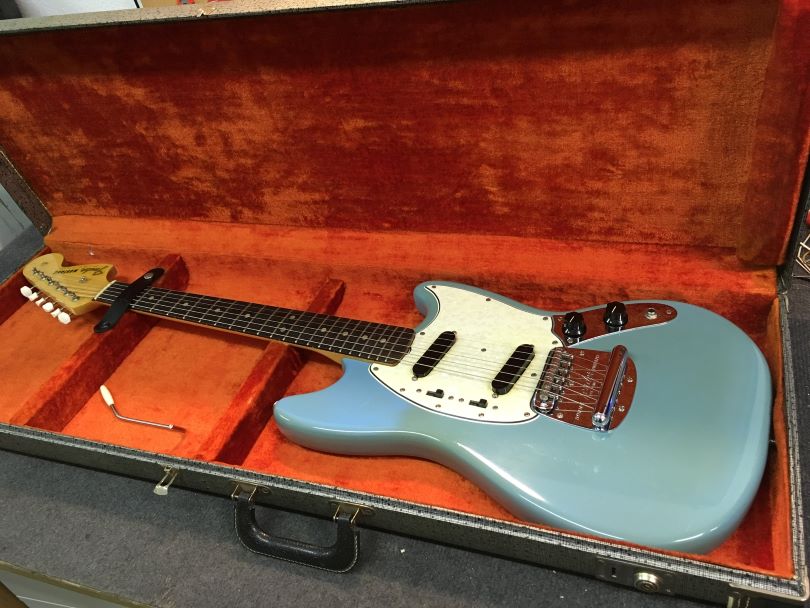
Guitars with a typical 25.5-inch scale length
The 25.5-inch scale length is the most common and popular. It's versatile and can be played by guitarists with large hands but also by those with smaller hands if they don't mind.
This is the same scale length as the aforementioned Jazzmaster, which is also classified as an offset guitar but is designed more professionally. It is a full-sized guitar, the name of which is perhaps a bit misleading, as it is mainly favoured by players of Surf Rock or alternative styles.
The Stratocaster and Telecaster have a 25.5-inch scale length from the start, as they were envisioned as top models that would be used by professional players across the spectrum. These models proved to be a hit from the start, and there was no point in changing anything significant about them.

Children guitars scale length
Nowadays, Fender Squier produces children's Stratocaster models which have a short scale and are lightweight, so they are not such a burden on the back. What's interesting, though, is that these models still have a scale almost 1cm longer than the first Musicmaster or Duo Sonic used to have.
To close
Throughout several decades-long history, it has become apparent that each guitarist prefers a different scale length. However, it is not just about it. Many players have taken a liking to offset guitars because of their sound and appearance. The shorter scale of these models is just a compromise that has to be made. An intermediate model in terms of the combination of scale length and shape of the guitar is the Jazzmaster, which, however, is not such a versatile instrument... So as you can see, there are still plenty to choose from.
If you have found an error or typo in the article, please let us know by e-mail info@insounder.org.


